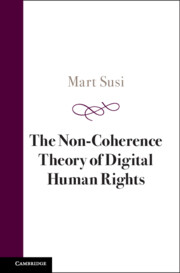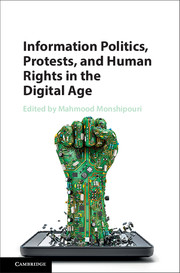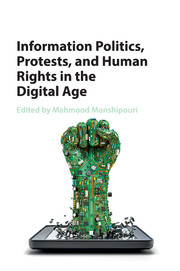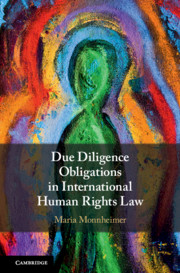The Non-Coherence Theory of Digital Human Rights
Susi offers a novel non-coherence theory of digital human rights to explain the change in meaning and scope of human rights rules, principles, ideas and concepts, and the interrelationships and related actors, when moving from the physical domain into the online domain. The transposition into the digital reality can alter the meaning of well-established offline human rights to a wider or narrower extent, impacting core concepts such as transparency, legal certainty and foreseeability. Susi analyses the 'loss in transposition' of some core features of the rights to privacy and freedom of expression. The non-coherence theory is used to explore key human rights theoretical concepts, such as the network society approach, the capabilities approach, transversality, and self-normativity, and it is also applied to e-state and artificial intelligence, challenging the idea of the sameness of rights. This title is part of the Flip it Open programme and may also be available Open Access. Check our website Cambridge Core for details.
- Introduces a novel legal theory related to digital human rights
- Explains how the scope and content of core human rights changes in the digital domain
- Applies the non-coherence theory to various technical developments, such as Artificial Intelligence, e-state etc.
Product details
February 2024Hardback
9781009407700
340 pages
235 × 158 × 24 mm
0.64kg
Available
Table of Contents
- Introduction: the distorted image
- Part I. The Contextual Challenges and Purpose of The Non-Coherence Theory of Digital Human Rights:
- 1. Horizontal and vertical governance models and normativity
- 2. The ontological dimension-reflections on distorted images and normative fragmentation
- 3. The epistemic dimension-rhetoric by and recognition of multiple actors
- 4. On the controversy about the relative weight of rights
- 5. Constitutional entitlements to human rights in the digital domain
- Part II. Reflections On Some Theories and Doctrines:
- 6. The doctrine of the sameness of rights online and offline
- 7. Claims of new internet-specific human rights
- 8. The capabilities approach
- 9. The frankfurt school and normative order of the internet
- 10. The articulation and critical review of self-normativity
- 11. The transversality principle (Teubner)
- 12. Network society approach (Castells)
- Part III. The Core Elements of The Non-Coherence Theory:
- 13. Doctrinal changes in scope and the meaning of human
- 14. The variance principle and digital transparency
- 15. Legal certainty and uncertainty
- 16. On foreseeability and non-foreseeability
- 17. Reflections from the academic debate
- Part IV. The Impact of The Non-Coherence Theory:
- 18. The e-state and fundamental rights
- 19. Proportionality deficit paradox
- 20. Automated systems and artificial intelligence
- Part V. Internet Balancing Formula:
- 21. The Internet Balancing Formula
- 22. Robert Alexy's views on the internet balancing formula
- 23. Reply to Alexy critique
- In lieu of the concluding remarks – the trailer for the monograph.






